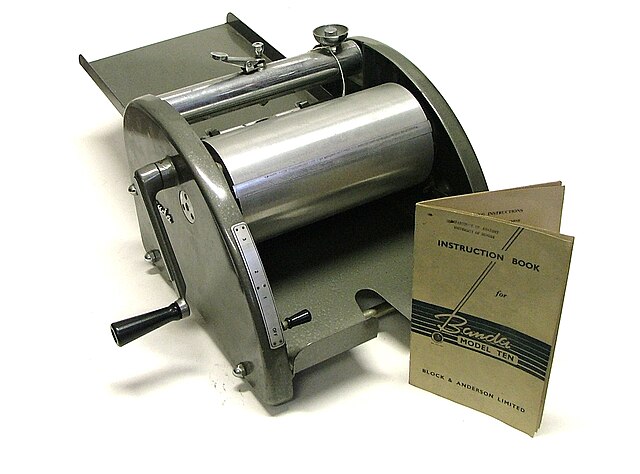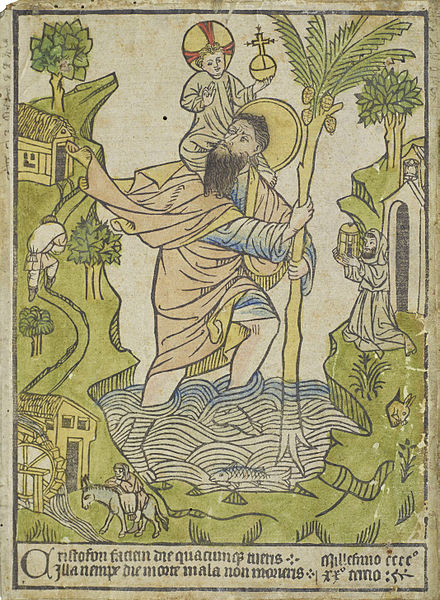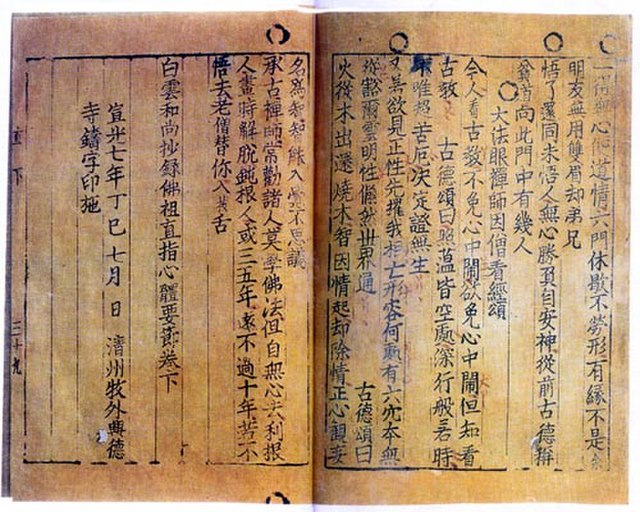A spirit duplicator is a printing method invented in 1923 by Wilhelm Ritzerfeld that was commonly used for much of the rest of the 20th century. The term "spirit duplicator" refers to the alcohols that were a major component of the solvents used in these machines.
A spirit duplicator machine
A school newspaper published using a ditto machine in 1978
A hand-cranked spirit duplicator from the 1960s
Printing is a process for mass reproducing text and images using a master form or template. The earliest non-paper products involving printing include cylinder seals and objects such as the Cyrus Cylinder and the Cylinders of Nabonidus. The earliest known form of printing evolved from ink rubbings made on paper or cloth from texts on stone tablets, used during the sixth century. Printing by pressing an inked image onto paper appeared later that century. Later developments in printing technology include the movable type invented by Bi Sheng around 1040 AD and the printing press invented by Johannes Gutenberg in the 15th century. The technology of printing played a key role in the development of the Renaissance and the Scientific Revolution and laid the material basis for the modern knowledge-based economy and the spread of learning to the masses.

The intricate frontispiece of the Diamond Sutra from Tang dynasty China, AD 868 (British Library), discovered at the Library Cave of Mogao Caves in Dunhuang, but probably printed in Sichuan.
The earliest known woodcut, 1423, Buxheim, with hand-colouring
Copperplate of 1215–1216 5000 cash paper money with ten bronze movable types
Jikji, "Selected Teachings of Buddhist Sages and Son Masters" from Korea, the earliest known book printed with movable metal type, 1377. Bibliothèque Nationale de France, Paris







